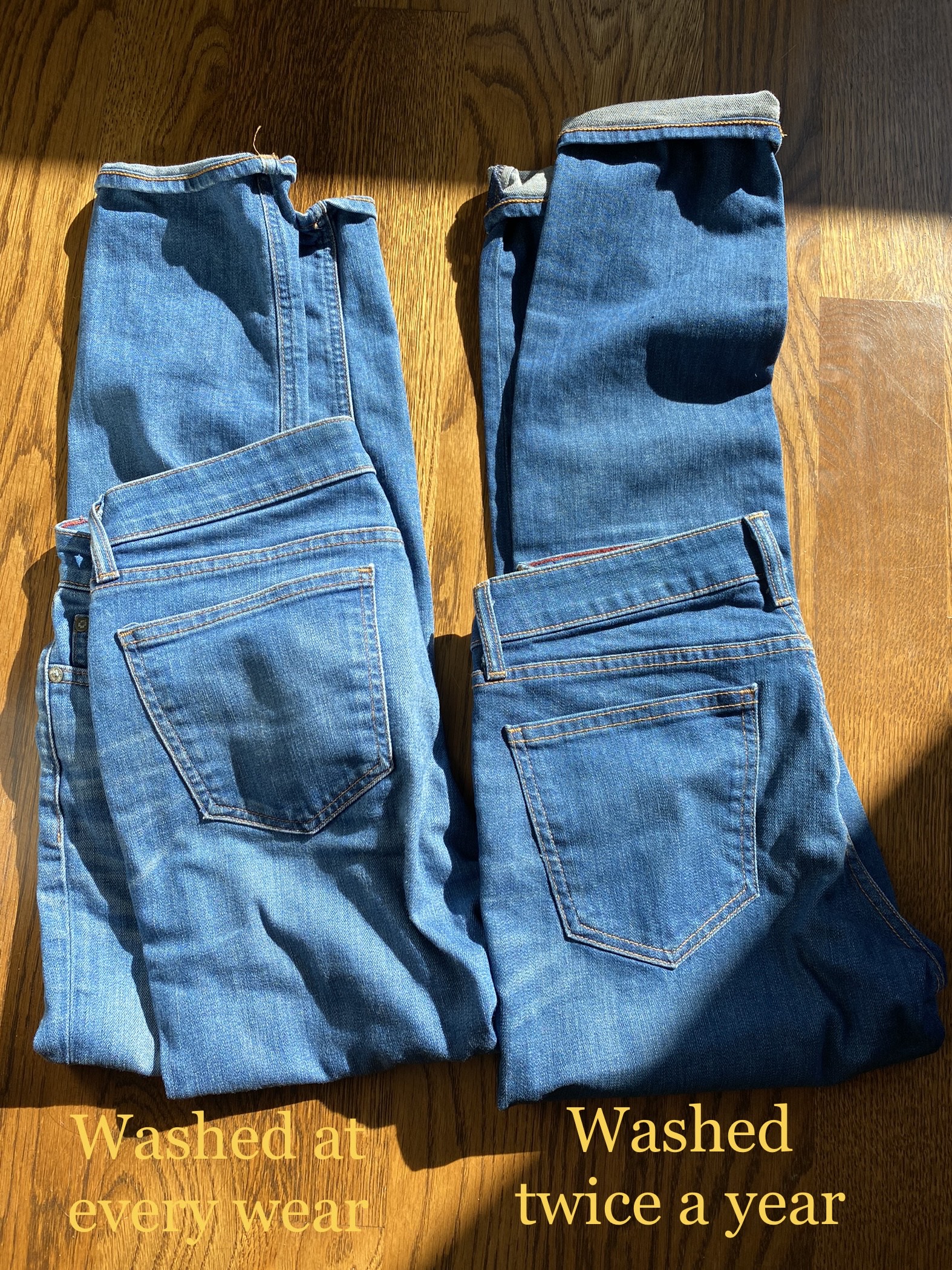Less washing means less time managing laundry – less of everything -washing, drying, putting away and organizing clothes. Less washing also means more savings…time, money and overall resources. As you can probably guess…I’m not a big fan of doing laundry!
 Washing your clothes only when necessary helps to slow down the fading of colors and aging of the fabric in general. That means your favorite piece of clothing can last longer. This is also great for the environment. My experiment revolved around one question…
Washing your clothes only when necessary helps to slow down the fading of colors and aging of the fabric in general. That means your favorite piece of clothing can last longer. This is also great for the environment. My experiment revolved around one question…
The deciding factor was more about hygiene than a routine or habit. I ran an experiment to try to determine how often I should do the laundry by taking into consideration look, fit, and comfort. To figure this out, I ran a test on jeans and t-shirts over a 14 month timeframe. I’m happy to say that doing laundry less often is a good thing. Here’s what I found:
Jeans on average performed and looked great without washing for 7 months. I tested four pairs of jeans 1) two of them were washed after every time it was worn 2) the other two were washed every 7 months (each worn once a week).
I found that the jeans that went in the wash after 7 months retained its great blue colors. The fabric looked and felt a bit thicker too. It felt closer to the feel of the newer jeans than the one with multiple washes. On the other hand, the jeans that were washed every time it was worn felt stiff when putting it on. After every wash the jeans lost a bit of its ability to stretch.
T-Shirts washed after 5-8 wears worked and performed well. The deciding factor for putting them in wash were smell, sweat and heavy stains. Smaller stains such as a drop of pasta sauce or dirt from a hike was manageable by wiping with a damp cloth. I found that many stains can be spot treated and did’t need to be washed to remove the stain.
I tested 10 cotton T-Shirts which included whites and different colors 1) 5 T-Shirts were washed after every wear 2) 5 were washed on an average after 5-8 wears. I found that the T-Shirts that were washed after 5-8 wears had colors more original to when purchased. The shape of the T-Shirts were also much better overall than the ones that were frequently washed.
A quiet celebration took place in my heart at the end of this experiment. The experiment has changed my family’s mindset. This was not only a big plus on maximizing dollars but it allows us to keep our favorite clothing longer. Our family ended up saving a lot of money by cutting our clothing purchases by a half.
So if you dislike doing laundry as much as I do, want to save money and make a positive impact on the environment…do less laundry!